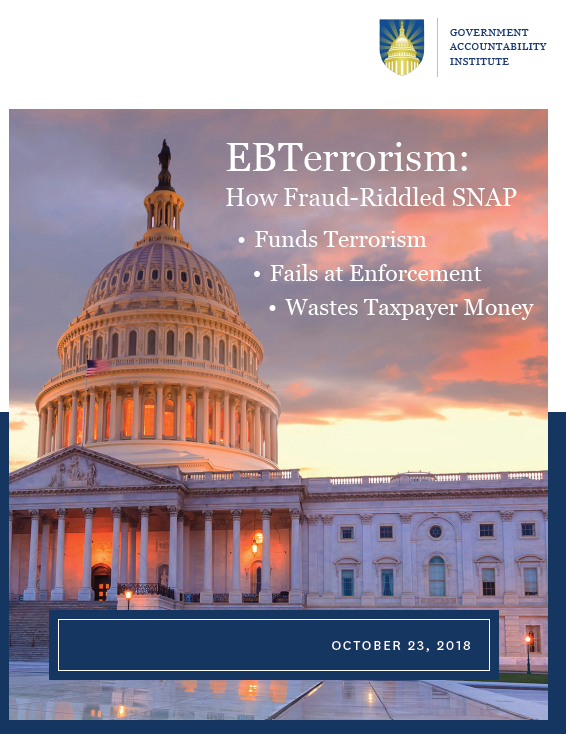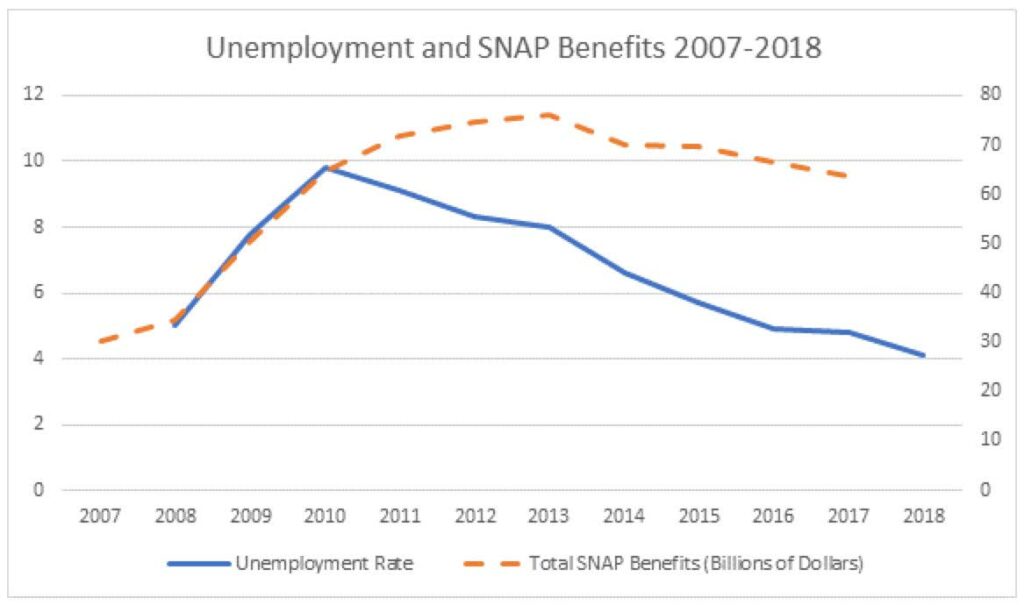Throughout the Great Recession, Supplemental Nutritional Assistance Program enrollment skyrocketed— and for good reason. Millions of Americans were unemployed, state and local governments were cutting public services, and vulnerable citizens needed help meeting basic needs, such as the ability to adequately feed their families. SNAP, also known as “food stamps,” provided relief.
GAI investigated the charges of widespread fraud in the EBT SNAP Program, and published our findings in the report “EBTerrorism: How Fraud-Riddled SNAP Funds Terrorism, Fails at Enforcement, and Wastes Taxpayer Money.”

Today, unemployment is two and one-half times less than its recession-era peak, and the economy is vastly improved, but the program remains disproportionately larger than its pre-recession size. As of June 2018, 39.3 million people are still enrolled in the program.
Throughout these years of explosive growth, FNS reported a trafficking fraud rate for the program of just 1.3 percent. Our investigation suggests otherwise. In our months of research, GAI interviewed approximately two dozen federal and state fraud investigators. We attended a week-long national public assistance fraud conference held by the United Council on Welfare Fraud that included nearly 300 fraud investigators from across the nation. We learned a very different story.
When a senior FNS official referenced the “one percent” fraud rate at the conference, an entire
roomful of fraud investigators erupted in laughter. Not one program integrity official we interviewed
believed FNS’s claim to be accurate. Indeed, the figure defies common sense, especially for a
program that has grown so much, and so quickly. Studies performed in Florida and California, based
on a sampling of cases that appeared suspicious on their face, suggest that fraud occurs far more
often. As SNAP grew in size, federal overseers did not provide for a proportionate increase in fraud
investigators and staff. In some instances, they actually reduced staffing.

As this report will show, FNS maximized food stamp participation during the past eight years
at the expense of program integrity. Since SNAP benefits are paid entirely by federal funds, states
have virtually no independent authority, or much incentive, to root out fraud in the program. In some
instances, states are even incentivized to underreport abuses when they are discovered. Worse, federal
program rules and regulations make it harder for states to detect fraud, even as they share the costs of
administering food stamp benefits. These issues allowed senior program officials to hide the true extent
of fraud by both SNAP retailers and recipients.EBTerrorism: How Fraud-Riddled SNAP funds terrorism, fails at enforcement and wastes taxpayer money.

